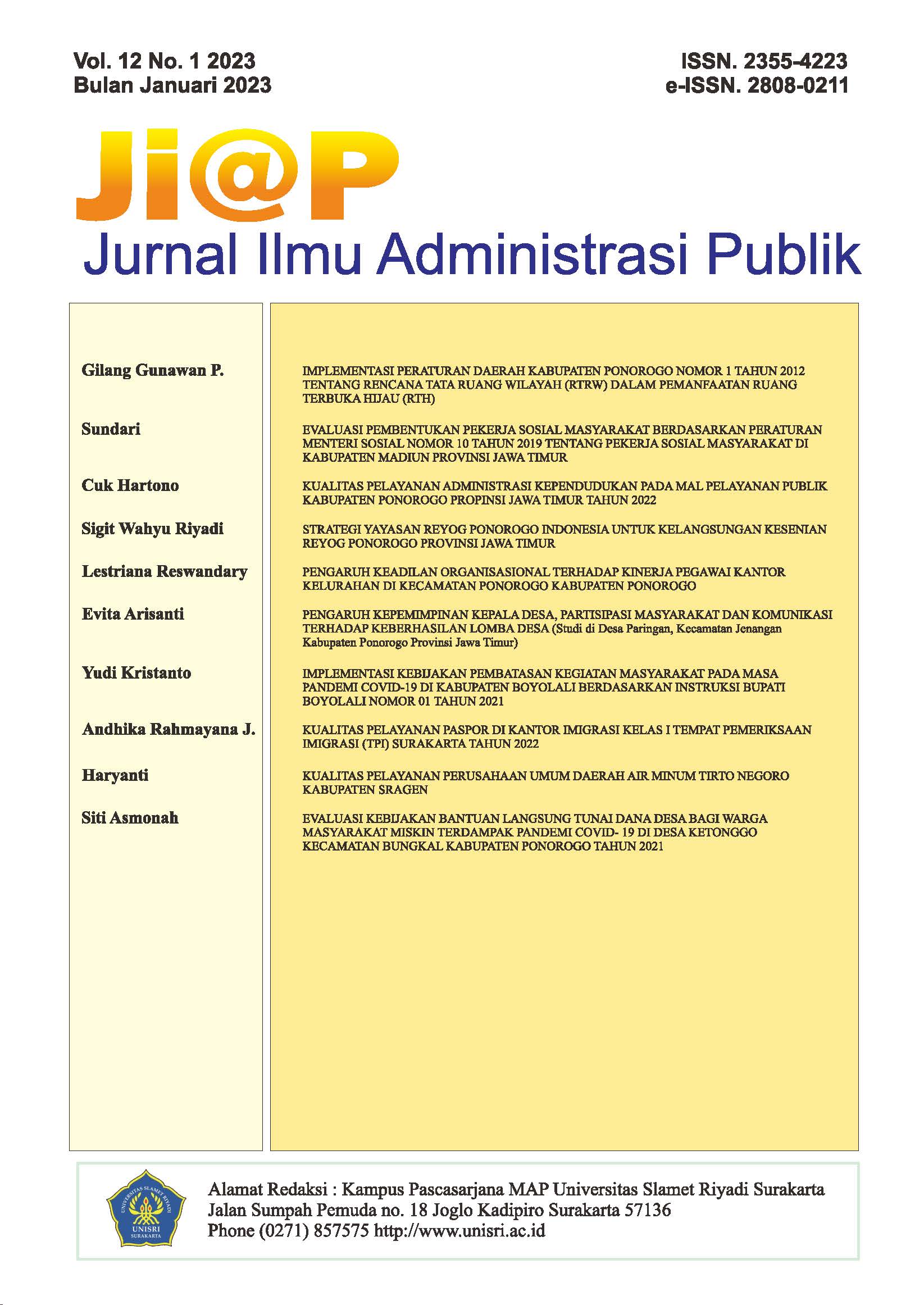STRATEGI YAYASAN REYOG PONOROGO INDONESIA UNTUK KELANGSUNGAN KESENIAN REYOG PONOROGO PROVINSI JAWA TIMUR
DOI:
https://doi.org/10.33061/jp.v12i1.7869Abstract
Reyog Ponorogo is a legacy of works of art from the ancestors of the Indonesian
nation that has survived centuries until now is still able to survive because Reyog
Ponorogo has a very important function and role in people's lives in Ponorogo.
The purpose of this research is to describe the strategies and obstacles of the
Reyog Ponorogo Foundation in the continuity of the Reyog Ponorogo arts.
The results of the research show that the S-O Strategy, namely the Art of Reyog
Ponorogo, is the final form of a long development process that contains
philosophical, religious and educational values that need to be preserved. The ST
(Strenghts-Threats) Strategies for Reyog Development that have been collected
are: 1) Building a system of "inheritance" and regeneration of Konco Reyog
Ponorogo, 2) Organizing Routine Exercises and Performances, 3) Maintaining
Standards, 4) Emphasizing Stories in Playing Reyog, 5) Building community and
government support, 6) Integrating Reyog in Ponorogo Culture and Tourism
Promotion. WT (Weaknesses-Threats) Strategy An original regional art that is
second to none in other regions and is now known by the wider community to the
international scene. The WT (Weaknesses-Threats) strategy, Reyog which is the
main attraction of Ponorogo Regency is preserved by holding reyog performances
every full moon, reyog festival every year which is summarized in the grebeg suro
event and Ponorogo anniversary.
Keyword : Reyog Ponorogo Foundation, Art of Reyog Ponorogo.
Downloads
Published
How to Cite
Issue
Section
License
Copyright (c) 2023 Sigit Wahyu Riyadi, Joko Pramono, Aris Tri Haryanto

This work is licensed under a Creative Commons Attribution-NonCommercial 4.0 International License.
Authors who publish this journal agree to the following terms:
- Authors retain copyright and grant the journal right of first publication with the work simultaneously licensed under a Creative Commons Attribution License that allows others to share the work with an acknowledgement of the work's authorship and initial publication in this journal.
- Authors can separately make additional contractual arrangements for non-exclusive distribution published by the journal (e.g., publish it in a book), with an acknowledgement of its initial publication in this journal.
- Authors are allowed and encouraged to send their work via online (e.g., in the institutional repositories or their website) after published by the journal.













